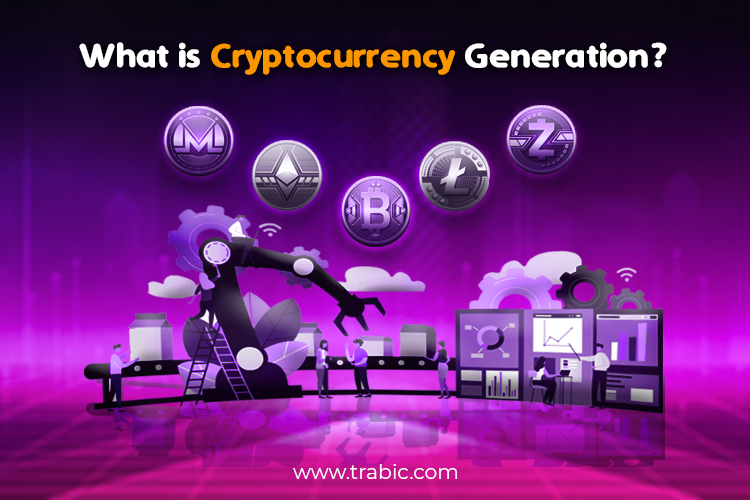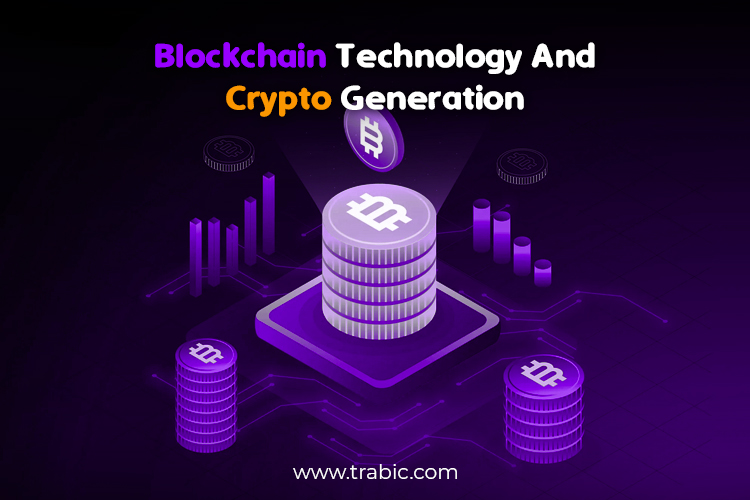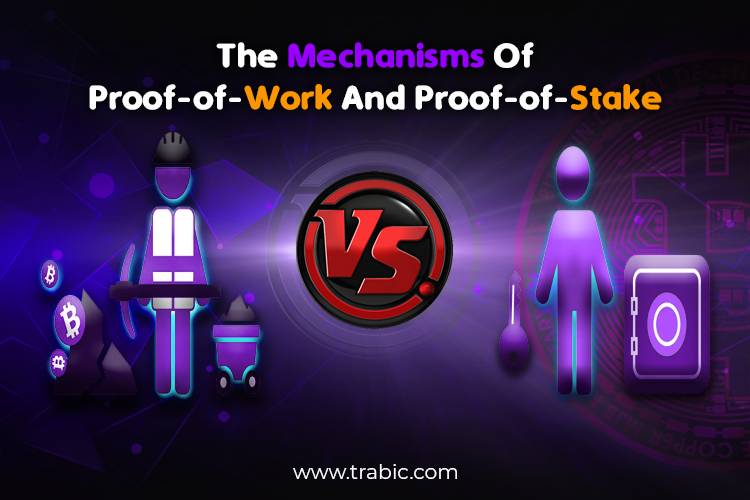In the ever-evolving world of finance, a digital revolution has taken place, giving birth to an enigmatic phenomenon known as cryptocurrencies. Behind the veil of intricate algorithms and cryptographic protocols lies a complex ecosystem that has captured tech enthusiasts’ and financial pioneers’ attention. Delving into the depths of this mysterious realm, we embark on a journey to unravel the secrets of cryptocurrency generation.
At its core, generating cryptocurrencies is an intricate process that defies traditional monetary systems. It is a symphony of mathematical equations, distributed networks, and consensus algorithms working harmoniously to create digital assets of unprecedented value. This transformative process, mining, involves using powerful computational resources to solve complex cryptographic puzzles. By decrypting these intricate puzzles, miners validate transactions, secure the network, and inject new coins.
The enigmatic nature of cryptocurrency generation lies not only in its technical intricacies but also in its disruptive potential. Decentralization, one of the key principles behind cryptocurrencies, challenges the traditional centralized control of financial systems. By operating on distributed ledgers, such as blockchain, cryptocurrencies eliminate the need for intermediaries, granting users unparalleled control over their digital assets and fostering a new era of financial sovereignty.
However, as we venture deeper into the realms of cryptocurrency generation, we encounter a myriad of challenges and intricacies. The process could be more complex, from scalability concerns to the environmental impact of mining operations. Yet, amidst these complexities lies the promise of a more transparent, efficient, and inclusive financial future.
In this exploration of the intricacies of cryptocurrency generation, we aim to demystify the enigma surrounding this digital revolution. Join us as we delve into the depths of cryptographic puzzles, unveil the power of distributed networks, and shed light on the mechanisms underpinning cryptocurrencies’ generation. Prepare to witness the unmasking of the code as we decipher the complexities and embrace the transformative potential of this groundbreaking technological phenomenon.
Cryptocurrencies have taken the world by storm, proposing an alternative financial system that is decentralized, secure, and free from the control of traditional banking institutions. As the popularity of digital currencies such as Ethereum, Bitcoin, and Litecoin continues to soar, it becomes increasingly important for individuals to understand how these cryptocurrencies are generated. In this blog post, we will decrypt the complexities of cryptocurrency generation, shedding light on the underlying code and demystifying the process.
Whether you are a cryptocurrency enthusiast, a potential investor, or simply curious about the technology behind these digital assets, this article will provide valuable insights into cryptocurrency generation. Cryptocurrency generation refers to creating new units of digital currency.
Unlike physical currencies printed by central banks, cryptocurrencies are “mined” through a decentralized and computer-intensive process. This process involves solving complex mathematical puzzles and verifying transactions on the blockchain, a distributed ledger that serves as the backbone of cryptocurrencies.
At the heart of cryptocurrency generation lies blockchain technology, which ensures transparency, security, and immutability of transactions. The blockchain functions as a public ledger that records and verifies every transaction, preventing double-spending and providing a decentralized consensus mechanism. We will explore the two primary mechanisms for cryptocurrency generation: Proof-of-Work (PoW) and Proof-of-Stake (PoS). Through PoW, miners compete to solve complex puzzles, with the first to solve them earning the ownership to add a new block to the blockchain and receive a reward.
PoS, conversely, involves validators who are chosen based on the portion of cryptocurrency they bear and are willing to “stake” as collateral. Furthermore, we will delve into the hardware and software requirements for cryptocurrency mining. From powerful GPUs and ASICs to specialized mining software, understanding the tools of the trade is crucial for anyone looking to participate in cryptocurrency generation.
By decrypting the cryptocurrency generation’s complexities, you will achieve a more profound knowledge of the underlying code and the mechanisms driving this transformative technology. Whether you are intrigued by the potential financial opportunities or the disruptive nature of cryptocurrencies, this knowledge will empower you to navigate this evolving landscape and make informed decisions confidently.
What is Cryptocurrency Generation?

Cryptocurrency generation is the process of creating new units of digital currencies. Unlike traditional currencies issued and controlled by central banks, cryptocurrencies are generated through a decentralized process known as mining. Mining involves solving complex mathematical puzzles using powerful computer hardware and software. Miners compete to solve these puzzles, and the first miner to locate the solution is awarded a certain amount of newly created cryptocurrency. This process secures the network, validates transactions, and adds them to the decentralized and transparent ledger that records all cryptocurrency transactions.
The generation of cryptocurrencies relies on the underlying technology called blockchain, which ensures the integrity and security of the network. Blockchain technology enables the distributed consensus mechanism, where miners validate and verify transactions without a central authority. Cryptocurrency generation is a vital component of the decentralized economy, and it plays a crucial role in maintaining the integrity and stability of digital currencies. Understanding the process of cryptocurrency generation is essential for anyone interested in participating in the cryptocurrency ecosystem or exploring the potential benefits of these innovative digital assets.
Blockchain Technology and Cryptocurrency Generation
Blockchain technology is founded at the core of cryptocurrency generation, revolutionizing how transactions are recorded and verified. It serves as a decentralized and transparent ledger that ensures the virtue and security of the network. Let us explore how blockchain technology and cryptocurrency generation go hand in hand. The blockchain is a distributed ledger consisting of a blockchain, each containing a list of validated transactions.
Unlike traditional financial systems, where a central authority verifies and records transactions, the blockchain operates on a peer-to-peer network, where multiple participants, known as nodes, maintain a copy of the ledger. This distributed nature ensures that no single entity controls the network, enhancing security and transparency. Cryptocurrency generation heavily relies on the blockchain for two essential purposes: transaction validation and new block creation. Miners, the participants in the cryptocurrency network, play a critical role in these processes.

- Transaction Validation: When someone initiates a cryptocurrency transaction, it is broadcasted to the network. Miners then verify the transaction’s authenticity and ensure the sender has enough funds to fulfill the transaction. This validation process involves checking the transaction against the rules and protocols defined by the cryptocurrency’s underlying code. Once a deal is verified, it is counted as a block and becomes a part of the blockchain.
- New Block Creation: Miners compete to solve complex mathematical puzzles in a process known as mining. The first miner to find the solution adds another block of transactions to the blockchain and receives a reward as a newly created cryptocurrency. The mining process requires substantial computational power, as miners must perform countless calculations to find the correct solution. This competitive nature ensures the security and immutability of the blockchain.
The blockchain’s inherent transparency enables anyone to inspect the transaction history and verify the authenticity of transactions. This feature enhances trust and eliminates the need for intermediaries in financial transactions, making cryptocurrencies an attractive alternative to traditional banking systems. Furthermore, the decentralized nature of blockchain technology ensures that no single entity can maintain or exploit the network. This feature makes cryptocurrencies resistant to censorship, fraud, and hacking attempts, contributing to their appeal as a safe and dependable form of digital currency.
Blockchain technology is the foundation for cryptocurrency generation, providing the necessary infrastructure for secure and decentralized transactions. The blockchain’s distributed ledger system, coupled with the mining process, enables the validation of transactions and the creation of new blocks. By leveraging blockchain technology, cryptocurrencies have emerged as a disruptive force, offering a decentralized financial system that empowers individuals and transforms traditional notions of money and transactions.
Proof-of-Work and Proof-of-Stake Mechanisms
Proof-of-Work (PoW) and Proof-of-Stake (PoS) are two prominent consensus mechanisms used in blockchain networks to validate transactions and secure the network.
Proof-of-Work (PoW)
PoW is the original consensus mechanism introduced by Bitcoin and widely adopted by various cryptocurrencies. In PoW, miners contest to unravel complex mathematical puzzles using computational power. The puzzles are designed to be challenging to solve but easy to verify. The first miner to find a reasonable solution broadcasts it to the network, and other nodes verify it.
The PoW mechanism ensures network security by making altering the blockchain’s history computationally expensive. Since miners need to invest significant computational resources, it becomes economically infeasible to launch a malicious attack. PoW also prevents double-spending, requiring most of the network’s computational power to validate and confirm transactions.
However, PoW has drawbacks, including high energy consumption and scalability challenges. The computational power for solving puzzles requires substantial electricity, making it an energy-intensive process. As the network grows, the time to validate transactions can increase, leading to slower transaction speeds.

Proof-of-Stake (PoS)
PoS is an alternative consensus mechanism that addresses some of the limitations of PoW. Instead of relying on computational power, PoS determines the founder of the next block based on the number of cryptocurrency tokens they hold and are planning to “stake” as collateral. In a PoS system, validators, also known as stakeholders, are chosen to create new blocks based on their stake in the network. The greater the stake, the greater the chances of being chosen to validate a block.
Validators are incentivized to act honestly, as they have “skin in the game” in the state of their staked tokens. If they validate fraudulent transactions or attempt to attack the network, they risk losing their staked tokens. PoS offers several advantages over PoW. It requires significantly less energy since it does not rely on intense computational calculations. This makes PoS more environmentally friendly and cost-effective. Additionally, PoS can achieve faster transaction speeds and improved scalability, as computational power does not limit the block creation process.
However, PoS has its own set of challenges. One common concern is the “nothing at stake” problem, where validators may be incentivized to validate multiple conflicting blocks. To mitigate this, various PoS protocols implement mechanisms such as “slashing” or penalties for dishonest behavior. PoW and PoS are consensus mechanisms in blockchain networks to validate transactions and secure the network.
PoW relies on computational power to solve puzzles, while PoS determines block validators based on their stake in the network. Each mechanism has advantages and challenges, and different blockchain projects may choose the one that best aligns with their goals and requirements. As the blockchain ecosystem evolves, new consensus mechanisms and hybrid models may also emerge, further expanding the possibilities for secure and efficient transaction validation.
Cryptocurrency Mining Hardware and Software
Cryptocurrency mining requires specialized hardware and software to participate effectively in generating new digital currencies.
Mining Hardware
Mining is an intensive task that demands powerful hardware to perform the necessary calculations. Here are two commonly used types of mining hardware:
- Graphics Processing Units (GPUs): GPUs are widely used for mining various cryptocurrencies, particularly those based on algorithms like Ethash and Equihash. GPUs excel at parallel processing, making them well-suited for the mathematical calculations required in mining. Miners often build dedicated mining rigs with multiple GPUs to increase their computational power and enhance their chances of successfully mining new blocks.
- Application-Specific Integrated Circuits (ASICs): ASICs are specialized mining devices designed specifically for cryptocurrency mining. These devices are purpose-built to perform mining operations efficiently and have a significant advantage over general-purpose hardware like GPUs in terms of performance and power efficiency. ASICs are particularly popular for mining cryptocurrencies like Bitcoin, which use the SHA-256 hashing algorithm.
It is worth noting that different cryptocurrencies may require specific hardware configurations or support different mining algorithms. Therefore, miners must research and choose the appropriate hardware based on the specific cryptocurrency they intend to mine.
Mining Software
In addition to hardware, miners need software to connect their mining rigs or devices to the blockchain network. Mining software serves as the interface between the mining hardware and the blockchain. Here are a few key aspects of mining software:
- Mining Clients: Mining software often comes as mining clients or applications that enable miners to connect to the blockchain network. These clients provide features like mining pool integration, monitoring and control of mining operations, and statistical analysis of mining performance.
- Stratum Protocol: The Stratum protocol is a widespread communication between mining hardware and mining pools. It allows miners to receive mining jobs and submit their solutions efficiently, optimizing the mining process.
- Mining Pools: Many miners join mining pools, which are collaborative groups that combine their computational power to increase their chances of mining new blocks. Mining software enables miners to connect to mining pools and contribute their hashing power to the collective effort. In return, miners receive a share of the mining rewards based on their contribution.
Using reliable and up-to-date mining software is essential to ensure smooth operations, efficient mining, and proper integration with the chosen cryptocurrency’s network. Cryptocurrency mining requires specialized hardware, such as GPUs or ASICs, to perform computationally intensive calculations.
Mining software is the interface between the mining hardware and the blockchain network, enabling miners to connect, contribute their computational power, and efficiently participate in the mining process. By selecting the appropriate hardware and software, miners can optimize their mining operations and increase their chances of successfully generating new cryptocurrencies.
The Reward System and Halving
The reward system and halving are essential concepts in cryptocurrency mining that directly impact the incentives for miners and the supply of new coins.
Reward System
In cryptocurrency mining, miners are rewarded for their computational efforts in securing the network and validating transactions. The reward system serves two primary purposes: incentivizing miners to participate in the network and controlling the supply of new coins. Typically, miners are rewarded with a certain number of newly minted coins for successfully mining a new block. For example, Bitcoin’s initial block reward was set at 50 bitcoins. However, this reward is not fixed and decreases over time.
Halving
Halving is a pre-programmed event in some cryptocurrencies, most notably in Bitcoin, where the block reward is reduced by half after a certain number of blocks are mined. This event is called the “halving” because it lessens the rate at which other coins are introduced into circulation. The halving process has significant implications. First, it helps control inflation and limits the supply of new coins.
By reducing the coin creation rate, halving ensures the total supply approaches a predetermined maximum limit. This scarcity contributes to the value proposition of cryptocurrencies. Second, halving has a direct impact on miner incentives. Miners receive fewer new coins for mining as the block reward halves. This reward reduction can affect profitability, especially for miners with higher operational costs. However, the decrease in supply could also drive up the cryptocurrency’s price, offsetting the reduced block rewards.
Halving events are typically programmed to occur at specific block intervals. For example, halving happens approximately every four years in Bitcoin, with the block reward being cut in half. This process continues until the maximum bitcoin supply is reached, set at 21 million coins.
Combining a decreasing block reward and a predetermined maximum supply creates an economic model that encourages early adoption, long-term investment, and scarcity-driven value growth: the reward system and halving play crucial roles in cryptocurrency mining. The reward system incentivizes miners to secure the network and validate transactions while halving events control the supply of new coins and contribute to cryptocurrencies’ scarcity and value proposition. These mechanisms help main blockchain networks stabilize, secure, and long-term via works while offering potential rewards for miners and investors.
Conclusion
Understanding the complexities of cryptocurrency generation, the role of blockchain technology, the mechanisms of Proof-of-Work and Proof-of-Stake, the hardware and software requirements for mining, and the reward system and halving events provide valuable insights into the world of cryptocurrencies. Cryptocurrency generation is a technical and transformative force that challenges traditional financial systems.
As the cryptocurrency landscape evolves, staying informed about these intricacies empowers individuals to navigate this decentralized ecosystem confidently. Whether you are a cryptocurrency enthusiast, an investor, or simply curious, unraveling the mysteries behind the cryptocurrency generation unlocks a world of possibilities. It opens doors to the future of finance.
